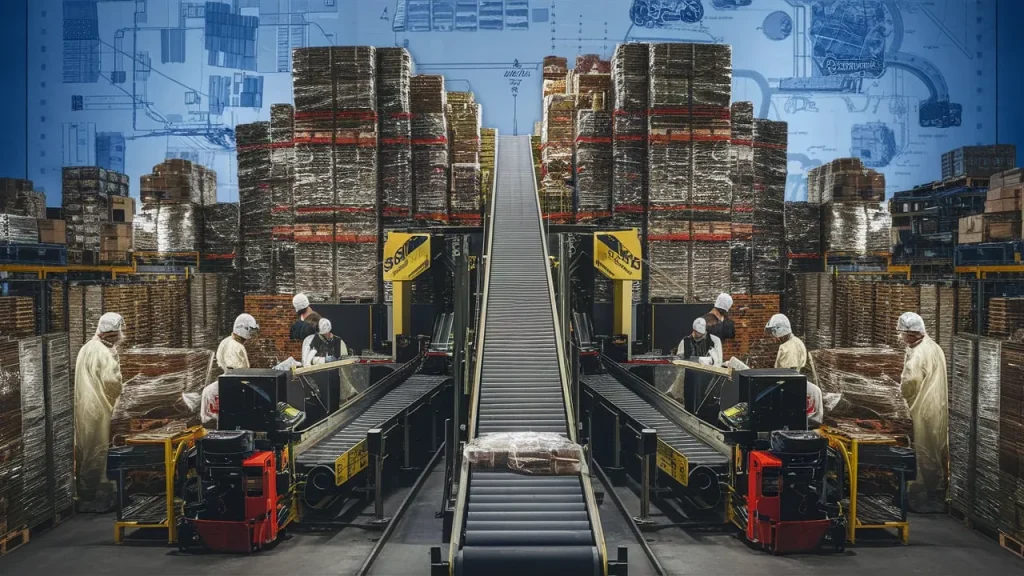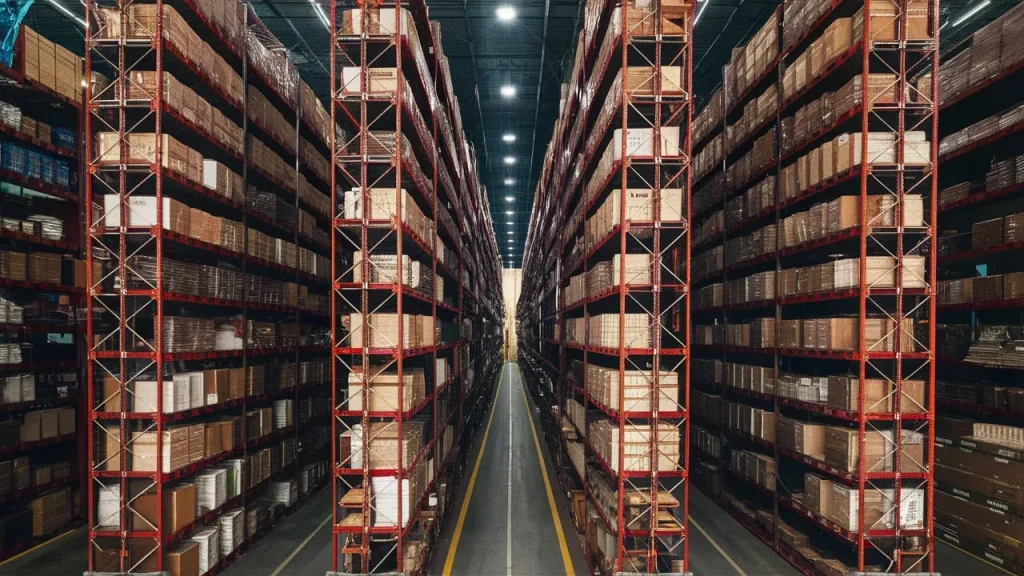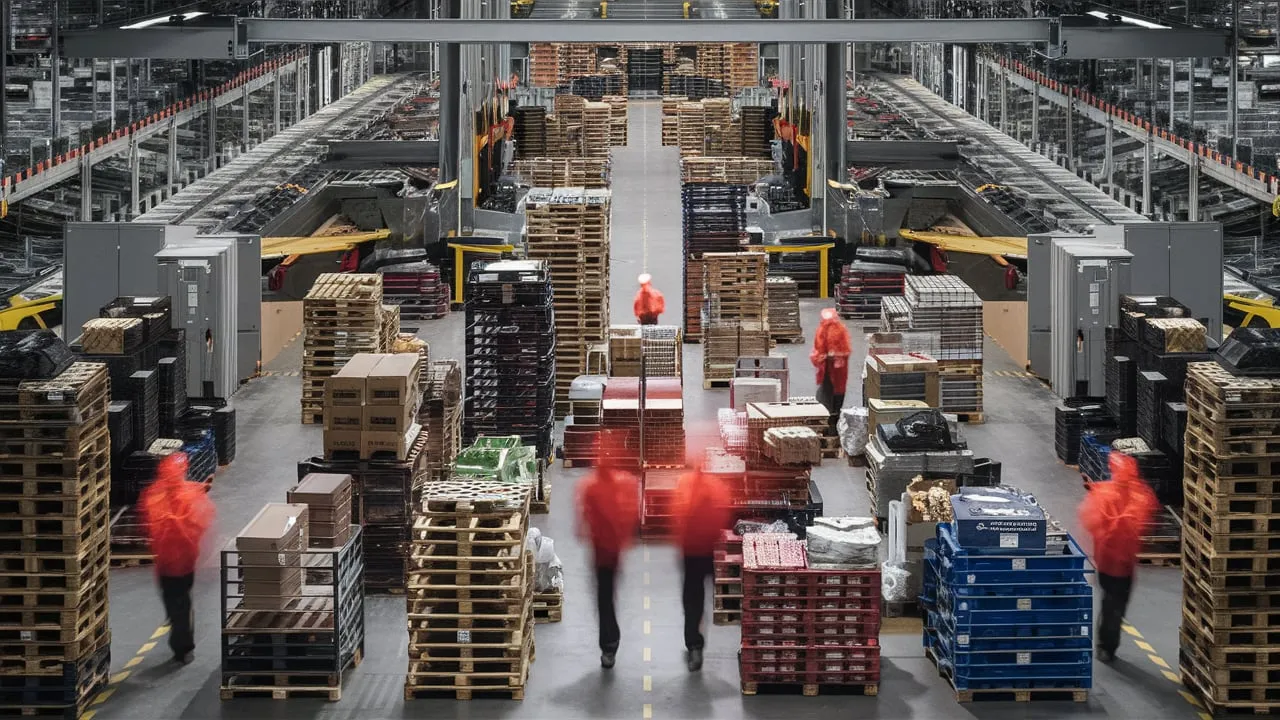Table of Contents
To maximize the flow of raw materials and finished goods in your business, you must develop a sustainable logistics network that efficiently coordinates the movement between suppliers, manufacturers, wholesalers, retailers, and consumers. Here are the key steps and considerations for building perfect logistics.
What Is a Logistics Network?

Coordinating the flow of goods between suppliers, producers, wholesalers, retailers, and customers is the function of logistics. It directly or indirectly manages the transportation, warehousing, and distribution of products from the point of manufacture to the end user.
Logistics Network Modelling
Logistics can be complex and require careful planning. They can be broken down into individual components that, when assembled efficiently, serve a business category. Key components include:
- Production systems
- Locations
- Size of facilities
- Distribution centres
- Transportation modes
- Inventory tracking and tracing
- Management systems
- Operational policies
These factors are prioritized based on the type of business. For instance, regulatory and legal guidelines take precedence if you work with hazardous materials.
Logistics Design
Logistics design relies heavily on data. Effective data collection and interpretation are crucial for designing a network that responds dynamically to market conditions. Automation and the use of AI are becoming increasingly important.
Inbound and Outbound Logistics Networks
- Inbound logistics: Links raw materials suppliers to manufacturers.
- Outbound logistics: Distributes finished goods to customers through intermediary warehousing and distribution centers.
How to Develop a Perfect
To develop a perfect logistics, follow these steps:
- Define your requirements
- Identify current and potential future demands
- Research candidate networks to model
- Analyze transportation, distribution, and service costs
- Identify alternative networks and contingencies.
- Determine the highest value criteria that matter most to you
Types of Logistics

Can be categorized into several types based on their core competencies:
- Procurement logistics
- Production logistics
- Warehousing and distribution logistics
- Recovery logistics
- Recycling logistics
Revolutionize Your Efficiency and Profitability
Developing an efficient and responsive is crucial for any business’s success. By understanding key components and design principles, you can optimize the flow of raw materials and finished goods, reduce costs, and enhance customer service.
What is a Logistics?
The function coordinates the flow of goods between suppliers, producers, wholesalers, retailers, and customers. It oversees goods’ movement, storage, and distribution from the manufacturing location to the final consumer.
Logistics Modelling
can be complex, but they can be broken down into individual components that, when assembled efficiently, serve a specific business category. Key components include production systems, locations, facility sizes, distribution centers, transportation modes, inventory tracking, management systems, and operational policies.
Also Read: The Growing Demand for Dedicated Logistics Services
Logistics Network Design
Effective design relies heavily on data. Collecting and interpreting relevant data is crucial for designing a network that dynamically responds to market conditions. Automation and the use of AI are becoming increasingly important in this process.
Inbound and Outbound Logistics

- Inbound logistics: Links raw materials suppliers to manufacturers.
- Outbound logistics: Distributes finished goods to customers through intermediary warehousing and distribution centers.
Developing a Perfect Logistics
To develop a near-perfect logistics network, follow these steps:
- Define your requirements.
- Identify current and potential future demands.
- Research candidate networks to model.
- Analyze transportation, distribution, and service costs.
- Identify alternative networks and contingencies.
- Decide which of the highest value criteria is most important to you.
Types of Logistics
Logistics networks can be categorized into several types based on their core competencies:
- Procurement logistics
- Production logistics
- Warehousing and distribution logistics
- Recovery logistics
- Recycling logistics
Closing Thoughts
The Logistics Networks landscape constantly adapts to emerging markets and operational systems. This means logistics networks will continue to change, driven by technological advancements and market pressures.
Through these components and processes, you can develop an efficient way to manage the flow of raw materials and finished goods, ultimately contributing to the success of your business.
FAQs:
What is a logistics network?
A logistics network is a system that coordinates the movement of goods between suppliers, manufacturers, wholesalers, retailers, and consumers, managing transportation, warehousing, and distribution.
Why is designing a logistics network important?
Designing an efficient logistics network is crucial for maximizing the flow of raw materials and finished goods, reducing costs, and maintaining high customer service levels.
What are the critical components of a logistics network?
Key components include production systems, locations, facility sizes, distribution centres, transportation modes, inventory tracking, management systems, and operational policies.
How do you develop a “perfect” logistics network?
Define requirements, identify demands, research network models, analyze costs, identify contingencies, and determine the most important criteria for your business.

